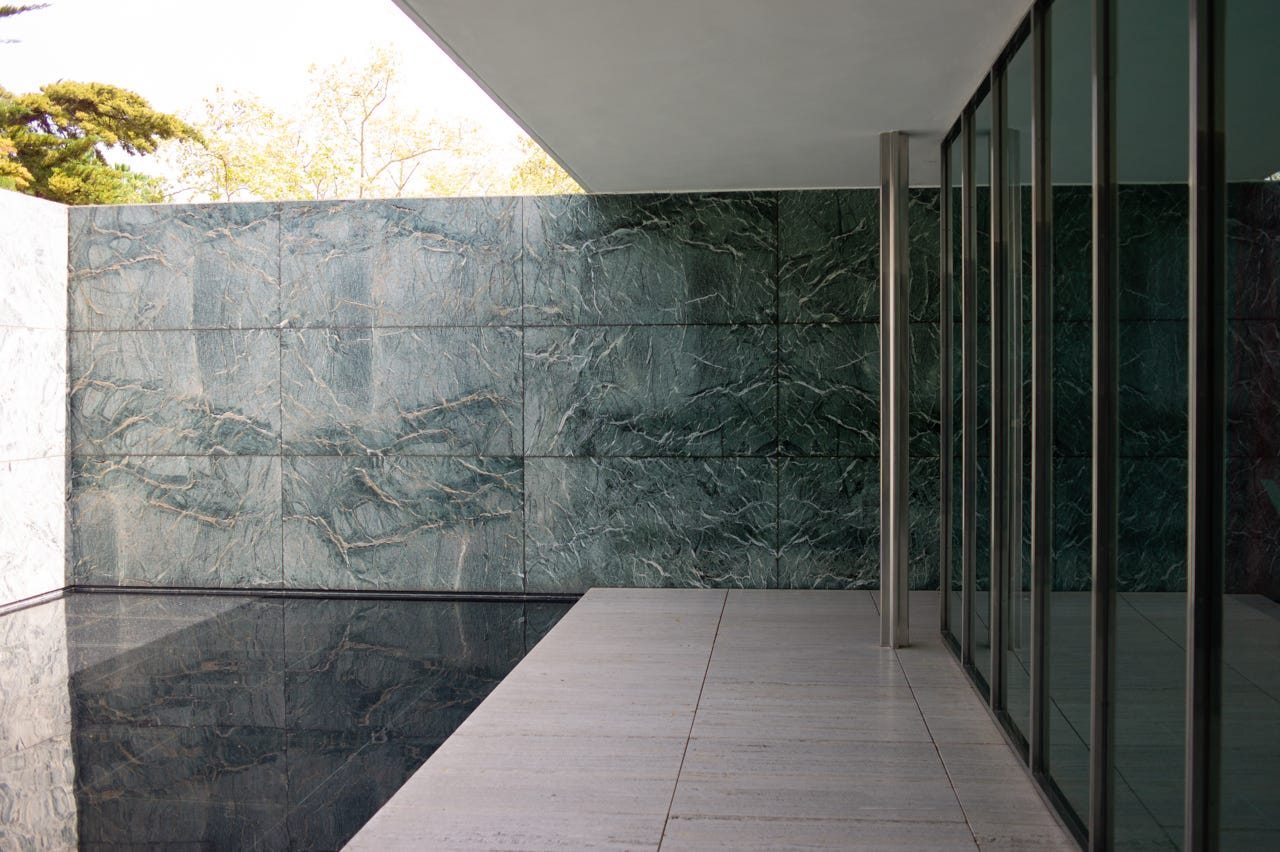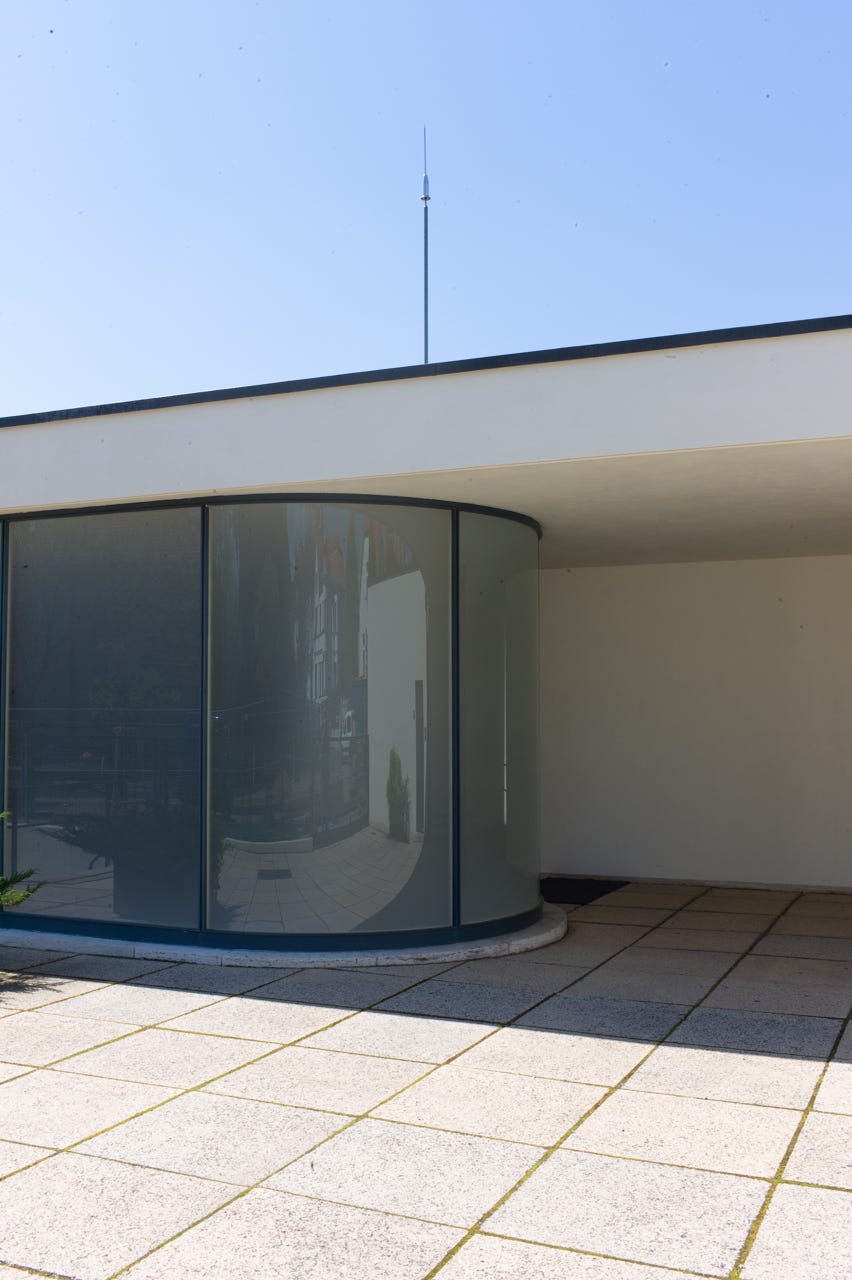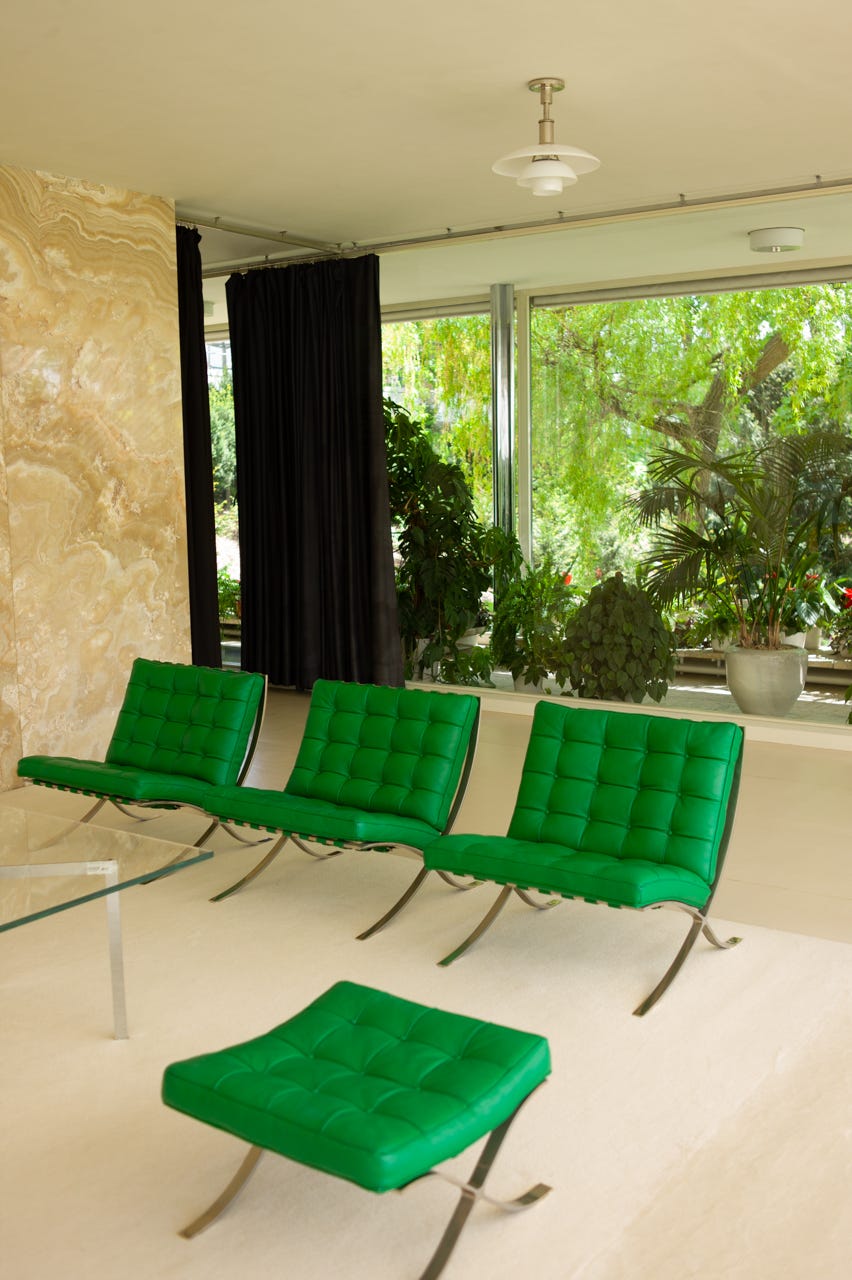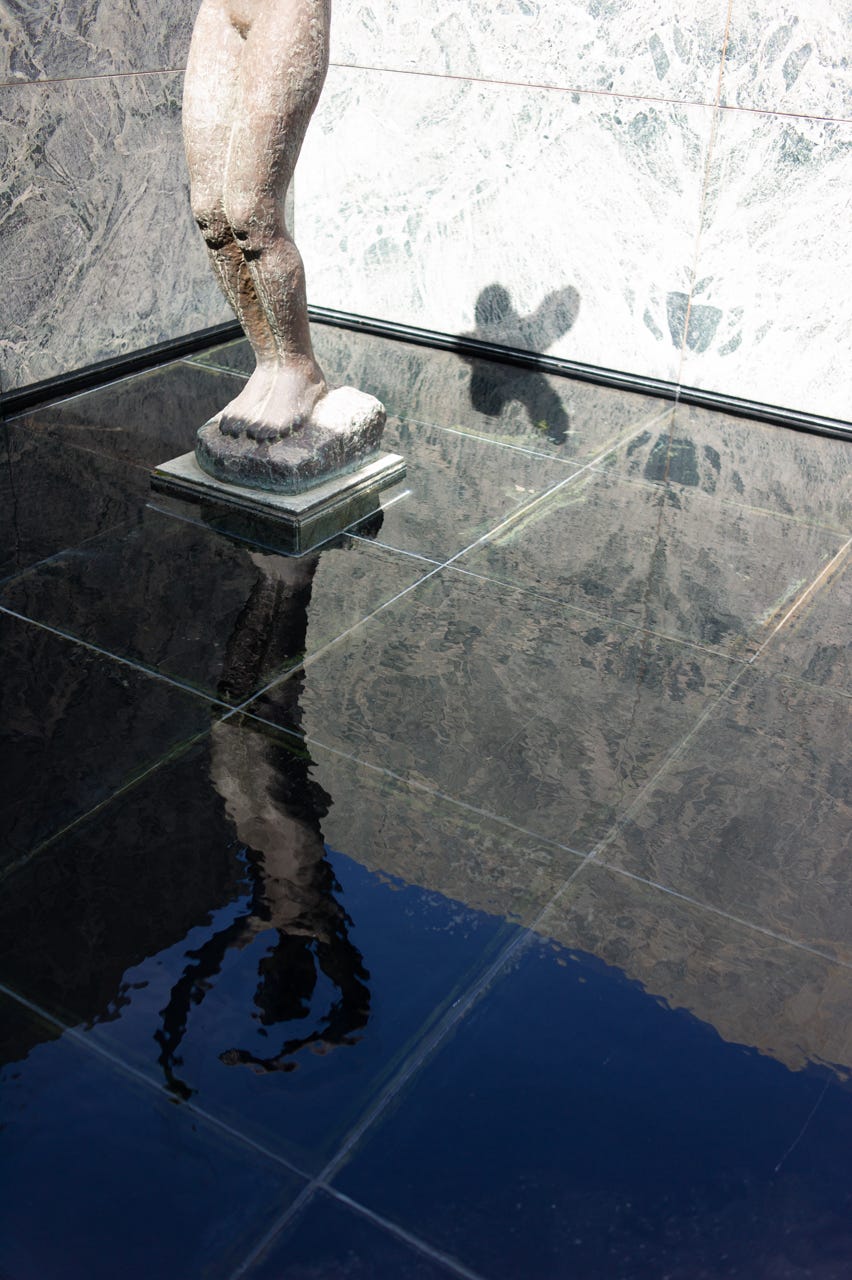August 31, 1914 …
We bid adieu to a whole epoch
Furious giants rise up over Europe
Eagles leave their eyrie awaiting the sun
Voracious fish ascend from the abysses
Nations rush together to get to know one another completely
The dead tremble with fear in their dark dwellings
Guillaume Apollinaire, “The Little Car”

As part of the 1929 International Exposition in Barcelona Spain, the Barcelona Pavilion, designed by Mies van der Rohe, was the display of architecture’s modern movement to the world. Originally named the German Pavilion, the pavilion was the face of Germany after WWI, emulating the nation’s progressively modern culture that was still rooted in its classical history. Its elegant and sleek design combined with rich natural material presented Mies’ Barcelona Pavilion as a bridge into his future career, as well as architectural modernism.
AD Classics: Barcelona Pavilion / Mies van der Rohe

[The Tugendhat] house designed by Mies van der Rohe is not even a genuine villa but a more or less irrational adaptation of the German Barcelona pavilion … All he did in this adaptation of his pavilion (which is nothing but a somewhat Wrightian architectural and sculptural flight of fancy, with its space arbitrarily divided by a few partition walls) is to add a toilet and a bathroom—and presto, the villa of the future has arrived … This is theater and sculpture, not architecture—snobbish ostentation, but not a dwelling.
Karel Teige,The Minimum Dwelling

The Roaring Twenties roared loudest and longest on the New York Stock Exchange. Share prices rose to unprecedented heights …
The epic boom ended in a cataclysmic bust. On Black Monday, October 28, 1929, the Dow declined nearly 13 percent. On the following day, Black Tuesday, the market dropped nearly 12 percent. By mid-November, the Dow had lost almost half of its value. The slide continued through the summer of 1932, when the Dow closed at 41.22, its lowest value of the twentieth century, 89 percent below its peak. The Dow did not return to its pre-crash heights until November 1954.
“Stock Market Crash of 1929,” Federal Reserve History

Grete and Fritz Tugendhat moved into their villa in 1930. Jews caught out in the wrong place at the wrong time, they emigrated to Switzerland in 1938. The house was confiscated following the German invasion of Bohemia and Moravia in March 1939. In 1945 it was damaged by shelling and the interior devastated by Soviet soldiers, who used it to stable their horses. The villa was let out as a ballet school until 1950, then used by Brno Children’s Hospital until 1969. The 1960s “thaw” raised hopes of restoring the house, but these died with the 1968 Soviet invasion.

The villa served as a depository for the archives of the Institute of Marxism-Leninism until 1982. It was finally restored in 1982-5, after which it became a meeting center for Brno city administration. It was here that secret negotiations took place in 1992 for the division of Czechoslovakia into two states. The villa was opened to the public in 1994. It was granted “National Cultural Monument” status a year later.
text adapted from my article “The Unbearable Lightness of Building“

A. Enlightenment B. Endarkenment (Hint: There is No C).
album by Ray Wylie Hubbard
commentary
The epigraph quote is taken from Apollinaire’s poem “The Little Car” in his Calligrammes, most of which were written during his military service in World War I.
The photographs were taken in two of Mies’s van der Rohe’s best known buildings, the Barcelona pavilion that formed the German entry for the 1929 Barcelona World’s Fair, and the Tugendhat villa in Brno in what is now the Czech Republic (on which he was concurrently working). Henry-Russell Hitchcock and Philip Johnson described these in the MoMA exhibition that first coined the term The International Style as respectively “perhaps the supreme example of architectural design of the decade of the twenties” and “one of the two finest houses in the new style” (the other being Le Corbusier’s Villa Savoye).
Demolished at the end of the World’s Fair, the Barcelona pavilion was reconstructed on the original site in 1981–1986. The Czech critic Karel Teige’s putdown of the Tugendhat villa as “somewhat Wrightian” (9.2) is an allusion to the American architect Frank Lloyd Wright.
“All that is solid melts into air” is a famous line from Karl Marx and Friedrich Engels’s Communist Manifesto, which Marshall Berman later took as the title of his classic study of modernity.
The statue reflected in the pool in the Barcelona pavilion (9.6) is Georg Kolbe’s The Dawn. Kolbe, whose Young Warrior was a centerpiece of the 1937 Great German Art Exhibition, was a favorite artist of the Führer’s. Ray Wylie Hubbard is a Texas singer-songwriter.
Leave a comment